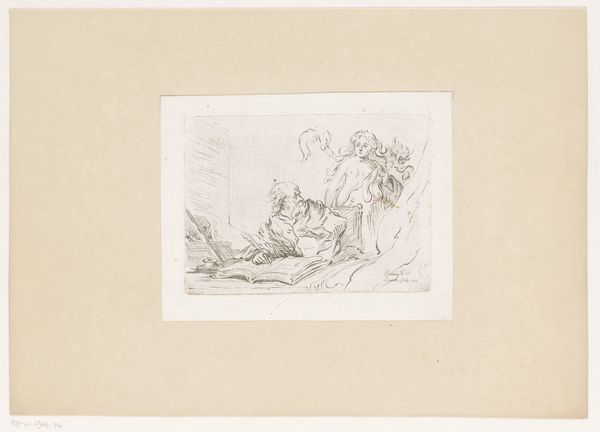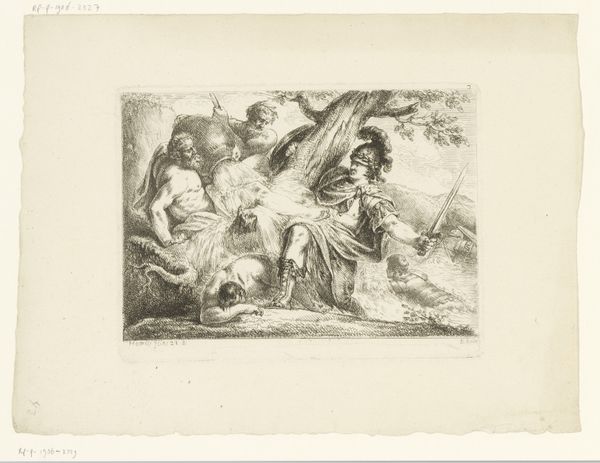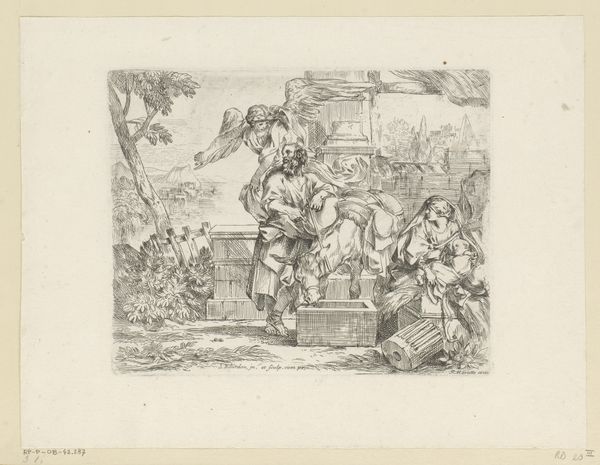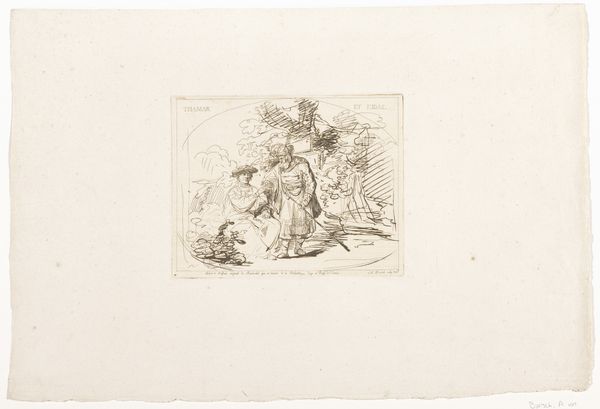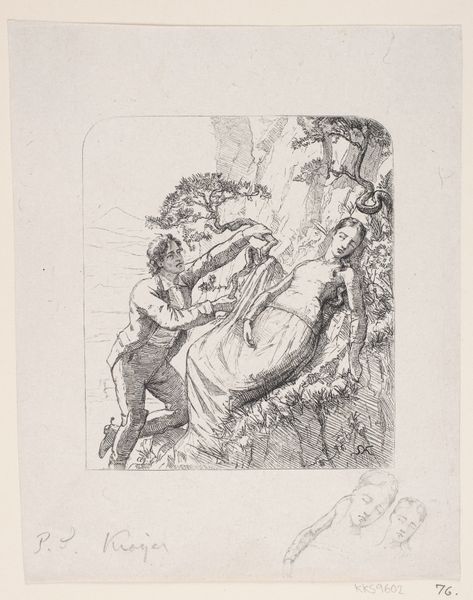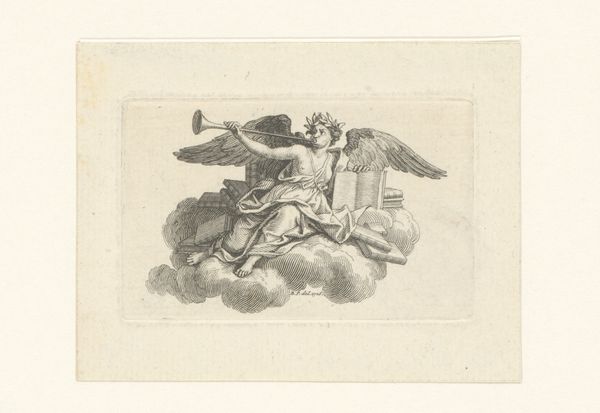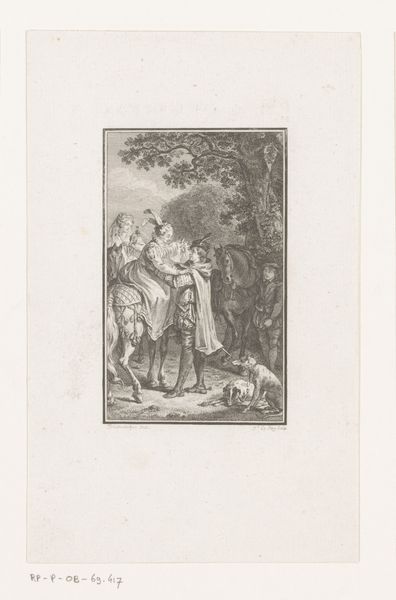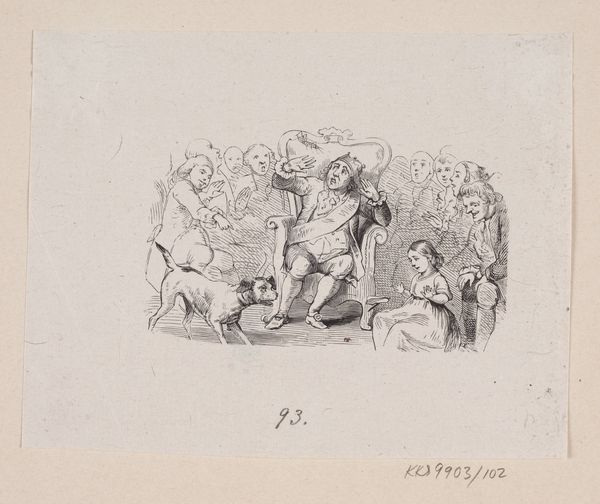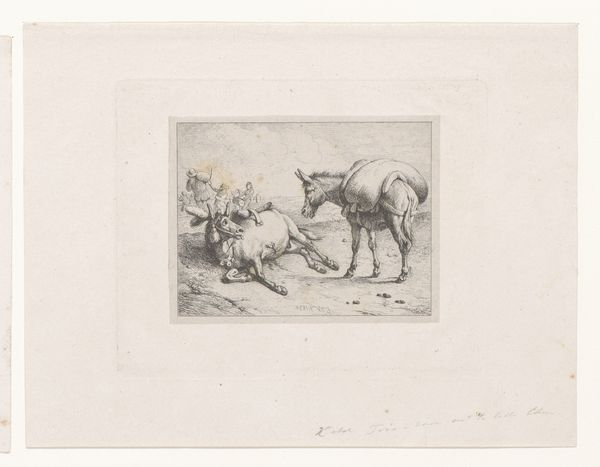
drawing, pen
#
drawing
#
narrative-art
#
baroque
#
pencil sketch
#
figuration
#
pen
#
academic-art
Dimensions: height 115 mm, width 180 mm
Copyright: Rijks Museum: Open Domain
Curator: I’m really drawn to the raw, unfinished energy in this drawing, a study of Minerva and a boy writing. The hand of Romeyn de Hooghe, we believe, sketched this sometime between 1655 and 1708. What grabs you first? Editor: It’s this incredible softness. A dreamlike state hangs in the air, as if glimpsed through the veil of sleep. I'm seeing a world filtered through imagination rather than hard fact, which seems apropos, since Minerva herself is the Roman goddess of wisdom and strategic warfare, though here, it seems her softer side is explored. Curator: Exactly. Notice the architectural tools, almost scattered around, juxtaposed against that heavenly vision in the upper left corner. There’s a deliberate pairing of earthly creation with divine inspiration. A visual representation of where all good ideas spring from, perhaps? Editor: Indeed, but what about that small boy? I see him hunched over, diligently mirroring Minerva’s activity, sketching away. It presents a rather clear motif of the passing down of knowledge, which itself, you could argue, is symbolized by Minerva herself. Is this boy an allegory of potential in progress? Curator: Possibly. The iconographic lineage certainly suggests the idea of education as not just instruction, but mentorship. It’s an intriguing commentary, especially considering the context of the Baroque period. Academic art valued allegorical paintings quite a bit, didn’t they? Editor: Undeniably. De Hooghe masterfully employed pen and ink here, transforming mere paper into a playground where symbols frolic and impart quiet wisdoms. The medium itself enhances that dreamlike, ethereal quality we spoke of. And I keep thinking about the pencil sketch and the light washes, so subdued yet so present. Curator: You know, thinking about De Hooghe, he's a master of cramming symbolism into his images—like a poet composing densely packed verses. Each element, from Minerva's helmet to the cherubic child, sings its unique meaning in a sophisticated and harmonious chorus. Editor: Yes, in this dialogue, each element calls and responds in a way that allows the viewer to understand the artist’s intention. A little show-and-tell, that leaves you pondering more than concluding. What a great dance of light and shadow, a veritable whisper of knowledge across time. Curator: Agreed! It seems De Hooghe sought to inspire through gentle nudges rather than grand pronouncements. This sketch certainly invites us to consider how inspiration flows between the earthly and the divine and consider the legacy of our own understanding of classical arts.
Comments
No comments
Be the first to comment and join the conversation on the ultimate creative platform.
